

Door seals for gluing: Does this also work on uneven floors?
Leaky front doors lead to cold homes. Cold homes lead to warmer heating systems. Warmer heating systems lead to higher costs. Can an inexpensive adhesive sealing strip break this cycle?
Whenever there's a cool wind outside, it also blows in my flat. This is not caused by open windows, but by a huge gap under my front door. I don't want to put up with it any longer. Especially as there are no doors to the kitchen and living room. This makes my flat look open, but it cools down quickly. So far, I've only been able to watch Netflix with a jumper and blanket. A seal is needed.
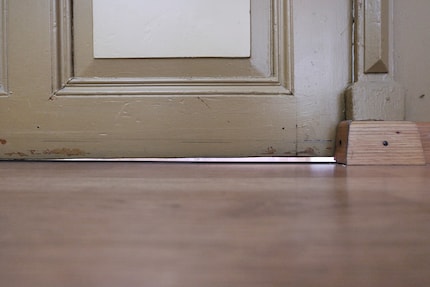
Draught
My door is not only old and warped, but my floor is also uneven. I realised this at the latest when my display cabinet almost flew towards me when I tried to put it in the living room. My flat is bitchy, but charming. For many door sealing strips for gluing, excessive differences in level are the killer. They get stuck because the bristles are too short or the rubber is too narrow. I fancied drop-down seals that are only lowered mechanically when the door is closed. But for most of them I have to cut a groove in the door. In a rented flat, that means getting permission. By chance, I discovered an adhesive seal that is supposed to have extra flexibility.


tesa tesamoll STANDARD door sealing strip, self-adhesive door seal for smooth floors
0.10 kg, White
Cutting and gluing
The difference to the normal version is that the rail is made of aluminium instead of plastic and the bristles are longer. This is simply to compensate for level differences on the floor. Both rails measure one metre and can be shortened to the width of your door. Once you have marked the spot with a pencil, you can push the brush aside on the cheap, white rail and shorten the plastic with scissors. Then push the bristles back into the right place and shorten them with a side cutter, as you have to cut through aluminium there.
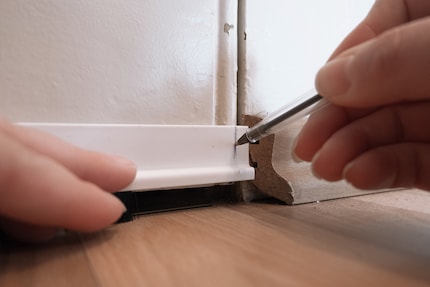
For the flexible, brown model, the plastic stoppers at the ends must first be removed and then the holder and brush can be removed in the same way as for the white model. Scissors are no longer sufficient for the aluminium rail, use a proper pair of side cutters. Then put the stoppers back on the rail and this on the door.
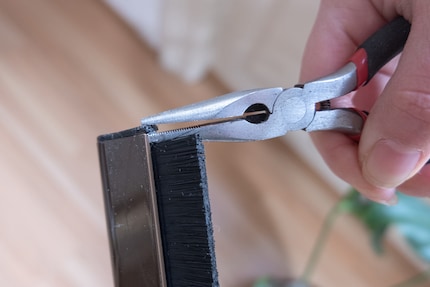
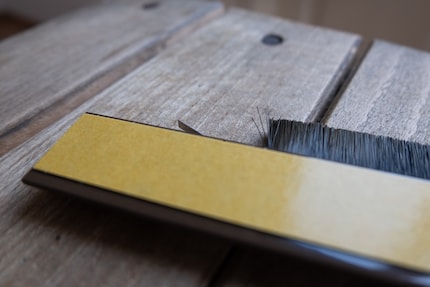
A quick wipe over with a cloth and cleaning agent and then a steady hand is required. Because once glued, you can no longer adjust it. The thing is bombproof. For me, the project works without any major problems. With the flexible version, my door can actually still be opened, even if the resistance increases slightly with every centimetre. The cheap version reaches its limits as soon as the door is half open. However, if you have a relatively even floor, you can buy the plastic seal with a clear conscience.
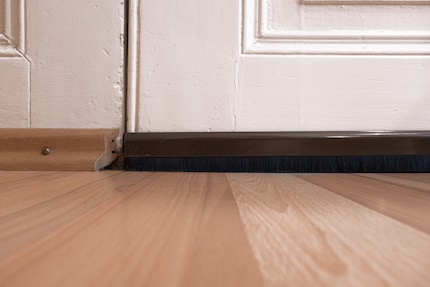
Does it help?
Yes. The test with my finger clearly confirms less draught. I also have the feeling the next morning that my hallway is warmer. To avoid falling into the placebo trap, I also borrowed my colleague Kevin's Seek thermal imaging camera. This also shows that blue areas, i.e. cool zones, are only a marginal phenomenon. In the truest sense of the word. Because the door is still a little warped at the sides. Nevertheless, the small investment has paid off. Friends also confirm that the temperatures are already more pleasant.
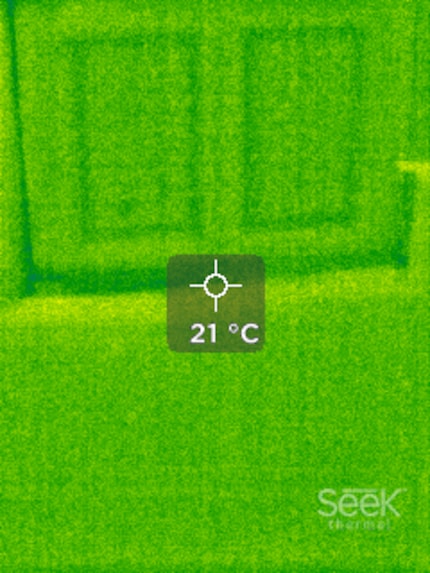

My life in a nutshell? On a quest to broaden my horizon. I love discovering and learning new skills and I see a chance to experience something new in everything – be it travelling, reading, cooking, movies or DIY.


